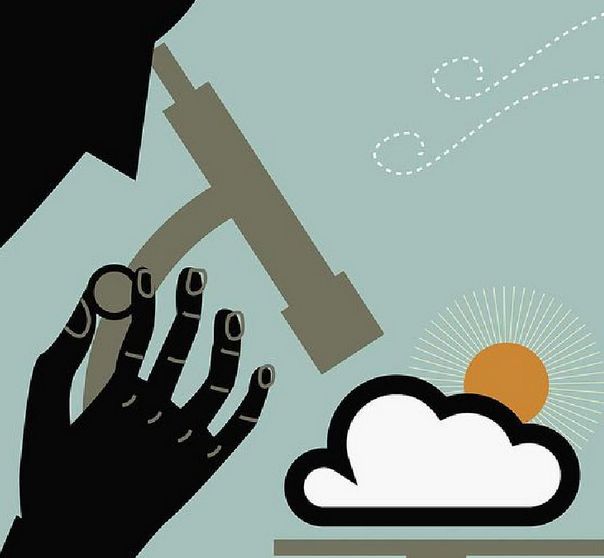قراءة لمدة 1 دقيقة Digital euro

A Digital Euro, is the project of the European Central Bank (ECB) to plan and possibly introduce of a central bank digital currency (CBDC).
The aim of the project is to develop a fast and secure digital currency bound to the Euro.
Individuals and businesses could use it additionally to Euro in cash and in bank accounts, and would be issued by the European System of Central Banks of the Eurozone.
The study phase will run from October 2021 to October 2023 and will prepare a decision on the introduction.
Arguments and motivations for introducing a digital euro.
Arguments and motives for the introduction of a digital euro are, according to the ECB:
In addition to these motives, the possibility of a further decline in the use of cash as a means of payment plays a role in the discussion on the digital euro.
Preparations for the possible introduction of a digital euro.
On October 2, 2020, the ECB published a report outlining the introduction of a digital euro from the perspective of the Eurosystem.
Since 2020, several projects have been launched in collaboration with the European Investment Bank (EIB) to test the issuance, control and transfer of central bank digital currency, as well as securities tokens and smart contracts on a blockchain.
2021.
Following preliminary planning and the presentation of the results of a public consultation in early 2021, the ECB decided in July 2021 to launch a digital euro project to prepare for the possible introduction of a digital euro.
No technical barriers were identified during the preliminary planning.
The research, which is scheduled to run until autumn 2023, aims to shed light on the distribution to merchants and citizens, the impact on markets and the necessary European legislation.
No preliminary decision has therefore been taken on the introduction of the digital euro.
2022.
In September 2022, the ECB announces a collaboration with five companies (Amazon, CaixaBank, Worldline, EPI and Nexi) to develop potential user interfaces for the digital euro.
Burkhard Balz, a member of the Bundesbank's Executive Board, sees the digital euro not least as a means of strengthening European sovereignty in payments.
In his view, the digital euro could be designed to support programmable payments in a highly automated environment.
The first progress report on the investigation phase ("Progress on the investigation phase of a digital euro") was published by the ECB in September 2022.
Speaking at the conference "Towards a legislative framework enabling a digital euro for citizens and businesses" held in Brussels in early November 2022, Christine Lagarde, President of the European Central Bank, reiterated that the digital euro is not a stand-alone project limited to the area of payments.
Rather, it is a cross-policy and truly European initiative that has the potential to have an impact on society as a whole.
In December 2022, the ECB published the second progress report on the investigation phase.
2023.
In January 2023, the ECB invited experts in the field of payments/finance to express their interest in contributing to the development of a set of rules for the digital euro.
At the end of May 2023, the ECB published the results of a market research and prototyping project.
The market research had shown that there was a sufficiently large pool of European vendors capable of developing digital euro solutions.
It had also shown that different types of architectural and technological design options were available to develop a technical solution for a digital euro.
The prototyping project involved the integration of five user interfaces developed by different vendors for each use case (front-end prototypes) and a settlement system designed and developed by the Eurosystem (back-end prototype).
Different design options were tested to determine whether they could be technically implemented and integrated into the Eurosystem's settlement system.
The tests showed that it would be possible to integrate a digital euro smoothly into the existing payment landscape, while leaving room for the market to use innovative features and technologies in the dissemination of a digital euro.
The results also confirmed that, in principle, a digital euro could function both online and offline using different technical concepts.
The question remains whether an offline solution that meets the Eurosystem's requirements and achieves the necessary scale can be implemented in the short to medium term using existing technology.
Views on the possible introduction of a digital euro.
The Verbraucherzentrale Bundesverband (Public German Consumer Protection Organisation) sees the digital euro as a public good and thus an opportunity to make digital payments more consumer-oriented.
The German Informatics Society (GI) sees the introduction of a digital euro and the simultaneous decline of cash as a threat to informational self-determination and privacy; there is a danger of the "Gläsnerer Mensch" (German metaphor for data protection, representing the complete "screening" of people and their behavior by a monitoring state, which is perceived as negative).
Banking industry.
From the perspective of the German Banking Industry Committee, the global trend toward central bank digital currency is unmistakable and represents both an opportunity and a challenge.
The planned introduction of a digital euro is seen as an important contribution to the digitalization of the economy and society and to securing Europe's sovereignty and competitiveness.
The digital money ecosystem proposed in a policy paper is intended to go beyond digital cash and consists of three elements:
The Association of German Banks supports the introduction of a digital euro.
In a position paper published in February 2023, the private banks emphasize the evolution of cash, their role in its issuance, its openness to innovation, and their desire to minimize the risks of its introduction.
Among the risks, the private banks specifically mention those affecting their business (disintermediation, diminishing returns, weakening of their customer relationship) and that a weakening of their investment capabilities could lead to the failure of the digital euro.
The Bundesverband der Deutschen Volksbanken und Raiffeisenbanken (BdV) welcomes the ECB's plans for a digital euro, but criticizes that the needs of the economy for a future digital payment method have not yet been sufficiently taken into account.
Industrial sector.
In a position paper published at the end of September 2022, the Bundesverband der Deutschen Industrie (BDI, Federation of German Industries) warns that the needs of the industry must be taken into account when introducing a digital euro.
The programmability of payments is a key demand.
of payments is a central requirement.
Eurogroup.
For Paschal Donohoe, president of the Eurogroup, a body of finance ministers from euro member states, the digital euro project is about maintaining the link between citizens and central bank money:
as central bank money, the digital euro would be convertible one-to-one into euro banknotes.
Unlike the industry, the Eurogroup does not want the digital euro to be equipped with additional functions.
European Commission.
In June 2023, the European Commission proposed in a draft regulation on the introduction of the digital euro that a digital euro should be made available as a legal tender not only to banks, but above all to the general public.
The Commission wants to design the processing of digital euro transactions in such a way that neither the European Central Bank nor the national central banks can attribute data to an identified or identifiable digital euro user.













































